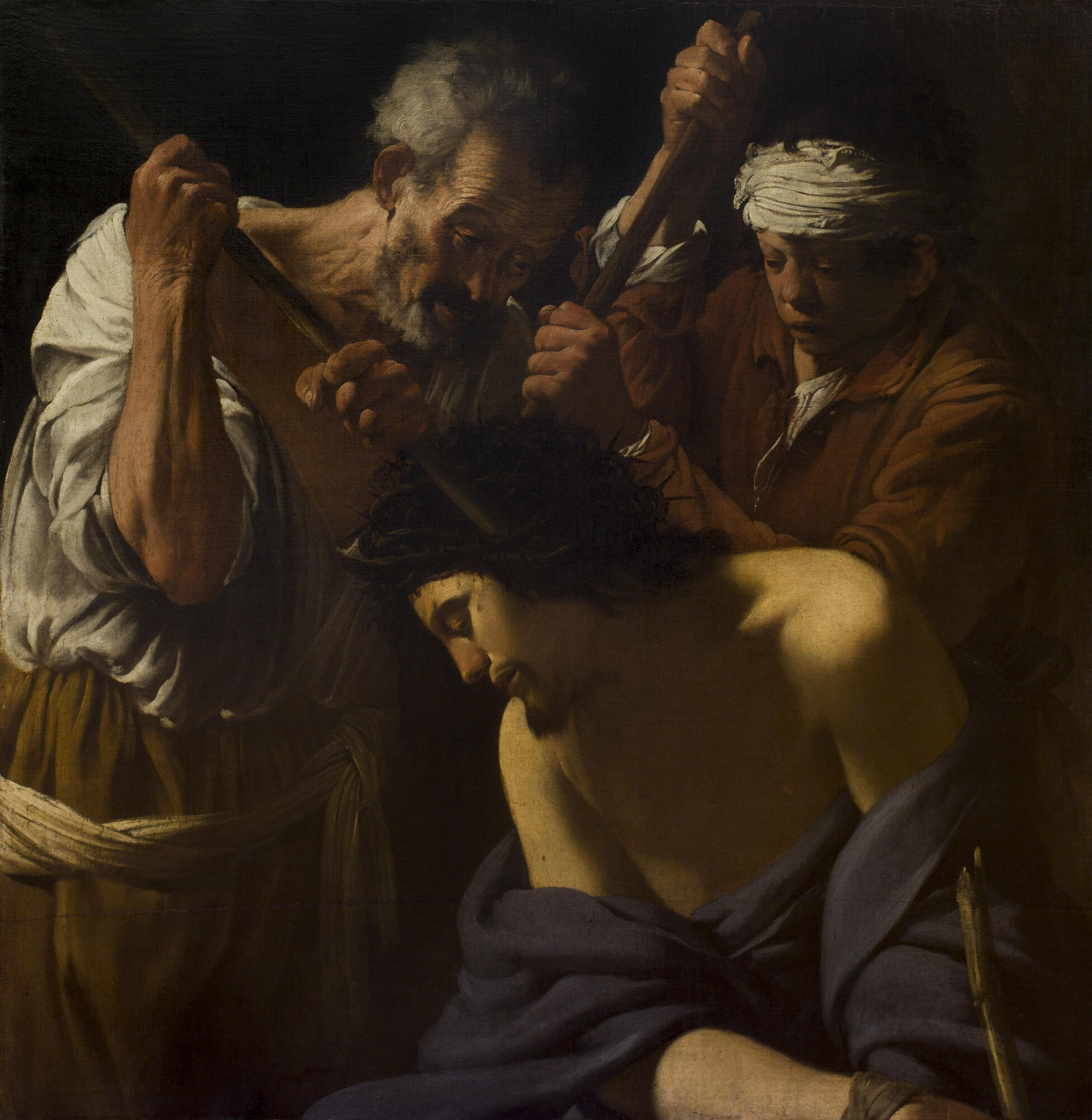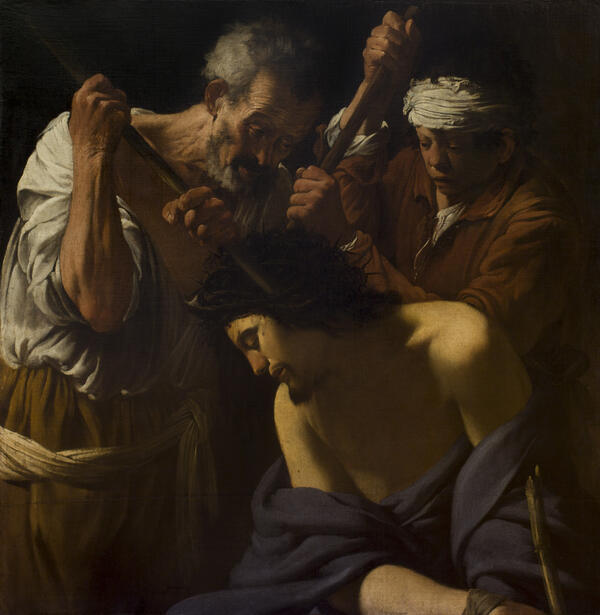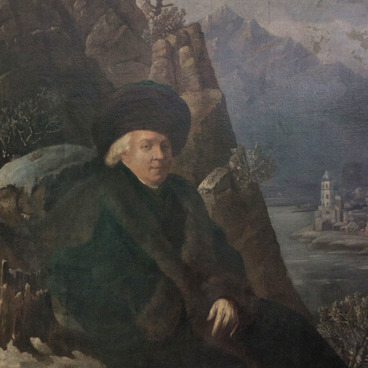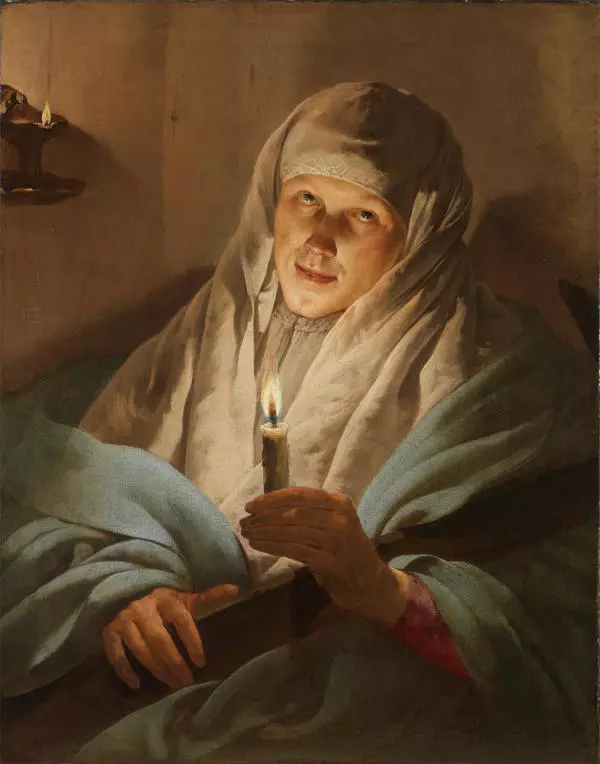In his youth, Hendrick Terbrugghen, the most prominent Dutch artist of the 17th century, studied in Utrecht. His teacher was a famous painter Abraham Bloomart. From 1604 to 1614, Terbrugghen lived and worked in Italy, where he studied the paintings of his favorite artist, the Italian Michelangelo da Caravaggio. After returning to Utrecht, Hendrick Terbrugghen became a central figure in the Dutch Caravaggism.
The artist painted ‘Christ Crowned with Thorns’ around 1622 in the heyday of his career. The tragic event of the Gospel story — the Savior is crowned with thorns — takes places against a dark background that is typical for the Caravaggisti. Christ looks aloof as if he had resigned to his fate. In contrast to his ideal image, the figures of the warriors are overly realistic: just look at their rough hands, the deep wrinkles on the face and neck of the old man, or his bald head. It is noteworthy that the picture does not display the stark contrast between light and shadow, typical for the works of the Utrecht Caravaggisti. The light in Terbrugghen’s painting touches gently the figures of the models and fades out in the folds of yellowish-white and olive clothes.
The painting entered the museum in the mid- 20th century as the work of an unknown artist. After 20 years of unsuccessful attempts by the museum staff to establish the authorship, they asked the Hermitage museum for help. A researcher from the Hermitage Irina Linnik suggested that the canvas was painted by the Dutch painter Hendrick Terbrugghen. In 1968, Linnik arrived in Irkutsk, carried out an examination and confirmed the authorship of the artist.
The researchers note that Terbrugghen used to make compositions on the same theme in two versions — half-figured and full-length. The work from the museum collection is a pair to the painting “The Desecration of Christ”, which is housed in the Copenhagen Museum.
Terbrugghen’s painting, which is characterized by deep melancholy and dramatic qualities, had a great influence on Dutch and European painting of the 17th century. The artist was highly regarded by such famous masters as Rembrandt van Rijn, Frans Hals, Jan Vermeer. Peter Rubens considered him the best of Utrecht’s masters. Terbruggen’s works are housed in the largest museums in Europe and the United States.
The artist painted ‘Christ Crowned with Thorns’ around 1622 in the heyday of his career. The tragic event of the Gospel story — the Savior is crowned with thorns — takes places against a dark background that is typical for the Caravaggisti. Christ looks aloof as if he had resigned to his fate. In contrast to his ideal image, the figures of the warriors are overly realistic: just look at their rough hands, the deep wrinkles on the face and neck of the old man, or his bald head. It is noteworthy that the picture does not display the stark contrast between light and shadow, typical for the works of the Utrecht Caravaggisti. The light in Terbrugghen’s painting touches gently the figures of the models and fades out in the folds of yellowish-white and olive clothes.
The painting entered the museum in the mid- 20th century as the work of an unknown artist. After 20 years of unsuccessful attempts by the museum staff to establish the authorship, they asked the Hermitage museum for help. A researcher from the Hermitage Irina Linnik suggested that the canvas was painted by the Dutch painter Hendrick Terbrugghen. In 1968, Linnik arrived in Irkutsk, carried out an examination and confirmed the authorship of the artist.
The researchers note that Terbrugghen used to make compositions on the same theme in two versions — half-figured and full-length. The work from the museum collection is a pair to the painting “The Desecration of Christ”, which is housed in the Copenhagen Museum.
Terbrugghen’s painting, which is characterized by deep melancholy and dramatic qualities, had a great influence on Dutch and European painting of the 17th century. The artist was highly regarded by such famous masters as Rembrandt van Rijn, Frans Hals, Jan Vermeer. Peter Rubens considered him the best of Utrecht’s masters. Terbruggen’s works are housed in the largest museums in Europe and the United States.




